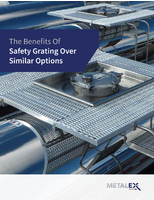Hot Oil Pumps

A Hot Oil Pump is a specifically designed piece of equipment used to pump heat transfer fluids at high temperatures. These fluids are usually oil based and good for use up to 650 degrees F. Hot oil is used in various industrial operations to heat a process or to maintain temperature in a product or on a piece of equipment.
In the past, the only way to accomplish this heat transfer process was by using hot water or steam on the process side. In today's industrial environment, heat transfer oil can be used for the same process, but with lower pressure requirements. The use of hot oil also eliminates or reduces corrosion effects on the pipe, equipment and pumps. Finally, in practice, oil produces a much more consistent temperature and flow in the process.
Hot oil pumps are used in many applications, from pharmaceuticals to processing rubber compounds to making asphalt with many varieties in-between. Anything and everything that requires controlled heat can be done with hot oil.
In a typical hot oil heating system, the pump is in a closed circuit, just before the heat source (usually a gas fired boiler or oil heater). The pump is on the process side of the circuit, or the heating load. After leaving the heater, the oil passes through a heat exchanger, where the heat transfer takes place. Heat is removed from the oil by this step and the heat is transferred to the product side. The oil is then returned to the pump, to begin the cycle again.
The type of pump used for this process is typically a centrifugal or positive displacement pump, depending on the flow/pressure characteristics needed in the process.
MP PUMP Company, based in Frazer Michigan (www.mppumps.com) manufactures the HTO series of centrifugal pumps, specifically designed for this application. The HTO line is one of the few close -coupled pumps (where the pump impeller is directly attached to the motor shaft) that can handle the high temperatures of hot oil without special sealing or cooling jackets.
The HTO pump is ideal for use in small spaces because it does not use a long (Lovejoy type) coupling. The pump is designed with a heat sync-type bracket, such that the mechanical seal environment is protected from the heat of the process. This design eliminates the need for external cooling to the seal. The cooling is accomplished with the air around the pump. Most other manufacturers utilize a water cooling system.
Keeping the seal cool is important in a hot oil pump. The diagram below shows how the process temperature is reduced to less than 350 Degrees F as it passes through the bracket assembly to the area of the seal. Because of this design, a less expensive mechanical seal can be used. This keeps the cost of the equipment and the complications of keeping the seal cool down.
The small amount of liquid needed to lubricate the seal then arrives at the seal at a temperature that can be handled by the seal. A cooler seal means a reduced chance of oil distillation and oxidation. This extends seal life.
The key steps that will reduce pump failures?
1. Maintain oil quality by eliminating air/oil contact. This step reduces distillation and oxidation.
2. Follow the manufacturer's recommendations in your system design for providing the correct expansion/contraction of oil using a nitrogen gas blanket to reduce distillation.
3. Use the proper oil heater calculations, so as not to "cook" the oil in the heating or heat transfer stages.
Advantages of an HTO Pump:
o Pump is insulated
o Use highly heat resistant materials
o Restricted heat flow back to the seal cavity
o Reducing the oil interaction from the pump side is very important
Hot oil in the process of heating can be a smart way to go. If you decide to use hot oil, check out the HTO series to see if it is right for your application.
Robert Brown Associates
Tom Halley
President
6-C Mount Pleasant Road Aston PA 19014
Tel: 610.354.0200 | Fax: 610.354.0340
www.rbapump.com




